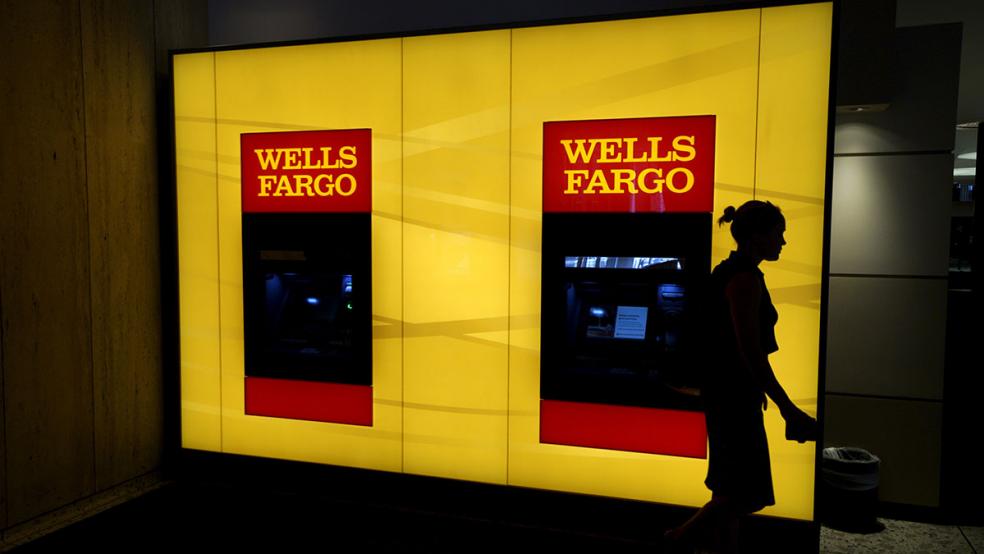Eager public relations staffers have expended thousands of hours trying to convince the public that banks did indeed “learn the lessons” of the financial crisis. Spokespeople across Wall Street confirmed that the banks mended their ways, instituted new safeguards and would never put the economy in peril again.
But top-level banking executives keep getting in the way of this narrative. It’s become increasingly evident that the managers of global financial institutions still see the law as an obstacle to be overcome rather than a boundary to work within. Two stories on Monday confirm this sad reality.
Related: The Worst Banks in America (Wells Fargo Isn’t Even No. 1)
First, British bank Barclays formally reprimanded its CEO Jes Staley for interfering with a whistleblower investigation. Here’s the story: In June 2016, someone anonymously delivered letters to the bank’s board and a top executive regarding a senior employee’s recent hiring, expressing “concerns of a personal nature.” The senior employee has been identified as Tim Main, Barclays’ chairman of global financial institutions, who worked for Staley at JPMorgan Chase.
The letters raised questions about Staley’s knowledge of the unidentified personal issue with Main and the propriety of the recruiting process. Staley, who got a copy of the letter, considered the charges an unfair attack on a colleague’s character. The problem is he tried to get an internal security group to identify who wrote the letter. When told that would be inappropriate, Staley tried again a month later, succeeding in having the security force enlist a U.S. law enforcement agency’s help. This still failed in unmasking the author.
A second whistleblower tipped off the board to Staley’s machinations in January. After an independent investigation, they brought down the hammer, announcing investigations by two British and one U.S. regulator, and a “very significant compensation adjustment” for the CEO.
Related: The 15 Most Overpaid CEOs in America
The board contends that Staley, who has apologized, “honestly, but mistakenly” believed that he could try to reveal the letter’s author. But he was implicated in the allegations. Even if they were bogus, it’s obviously wrong for a CEO to react to charges against him by trying to uncover the source. What do you think he was going to do with that information, invite the whistleblower to lunch? Plus, the internal security group told Staley once that his actions were inappropriate; he responded to this by trying again a month later.
The whistleblowing mechanism at Barclays is almost irreparably broken as a result. Employees with sensitive information surely get the message that top management will treat their claims with skepticism and attempt to violate their privacy.
Barclays has an unfortunate legacy of recent misconduct, including fines for rigging benchmark interest rates and currency exchange markets. The British government strengthened whistleblower protections in the aftermath, to encourage internal reporting. But as soon as Barclays’ processes, which it continually touted (“Barclays will make every reasonable effort to hold your name in confidence,” reads the ethics policy on its website), were put to the test, the CEO put his personal desires over the institution. The procedures might as well have not existed.
Related: Will Steve Bannon Go to War Against the Big Banks?
Meanwhile, we’re learning more about Wells Fargo, a bank that knows a thing or two about violating whistleblower protections. When some employees resisted filling out fake accounts in their customers’ names, and told human resources about pressure from their superiors to lie to meet sales goals, the bank fired them.
On Monday, Wells released the results of an internal board investigation into the fake account scandal. The headline is that the bank clawed back an additional $75 million in compensation from the two executives found the most responsible: former head of community banking Carrie Tolstedt and ex-CEO John Stumpf. But the report itself contains many interesting facts, including that the scandal goes back a decade and a half.
Related: Another Wells Fargo Scandal Proves Financial System Is Still Broken
Stumpf was first made aware that impossible sales goes were leading employees to issue fake accounts back in 2002, amid firings at a Colorado branch. He failed to make any significant changes to the sales structure. The board didn’t hear about the situation until 12 years later, and even then, executives soft-pedaled the problems, defending the sales goals. The board didn’t even learn that 5,300 employees had been terminated for these practices until the Consumer Financial Protection Bureau and the Los Angeles city attorney fined the bank $185 million in September 2016.
Just to be clear, the aggressive sales goals that led to fake accounts weren’t necessarily intended to scam customers, but to dupe investors about the phenomenal growth at Wells Fargo. As sales targets rose, confidence in the bank’s growth strategy soared as well. This was all built on a foundation of sand, and we now know that foundation took 14 years to construct.
The report describes how regional bank managers challenged high sales goals, but executives ignored them. Low-level employees routinely cited pressure to keep their jobs as the reason they issued fake accounts. When obvious frauds revealed themselves, the community banking team blamed bad apples instead of the incentives they designed.
Related: Five Reasons to Break Up With Your Bank
The firings that accompanied the fake accounts grew between 2007 and 2013, when a Los Angeles Times article broke the story. That means that even after the financial crisis and the large spotlight on the banking industry, Wells Fargo kept the fake accounts rolling. Even after 2013, the community banking division slow-walked reforms to sales goals issues, until the CFPB fine.
You could make a case that, in both of these cases, the system worked. Unsparing internal investigations detailed the misconduct. The banks’ boards harshly dealt with top executives by clawing back pay. Barclays CEO Staley could even be banned from the industry as a result of regulatory investigations.
But those self-criticisms only came after the fact. What appears to not be working is the banking industry’s post-financial crisis self-image as an above-board corporate citizen. Despite what the crisis revealed about banks’ win-at-all-costs methods of swindling customers and ignoring best practices, top managers still don’t get it. They continue to operate with relative impunity, ignoring red flags and even institutional procedures to get their way.
I hear White House economic adviser Gary Cohn wants to break up the banks; he thinks it’ll get lending flowing again. But the real reason to break up the concentrated power in this industry is that the management teams are too arrogant and dismissive of the law to create a corporate culture based on anything but thievery.






